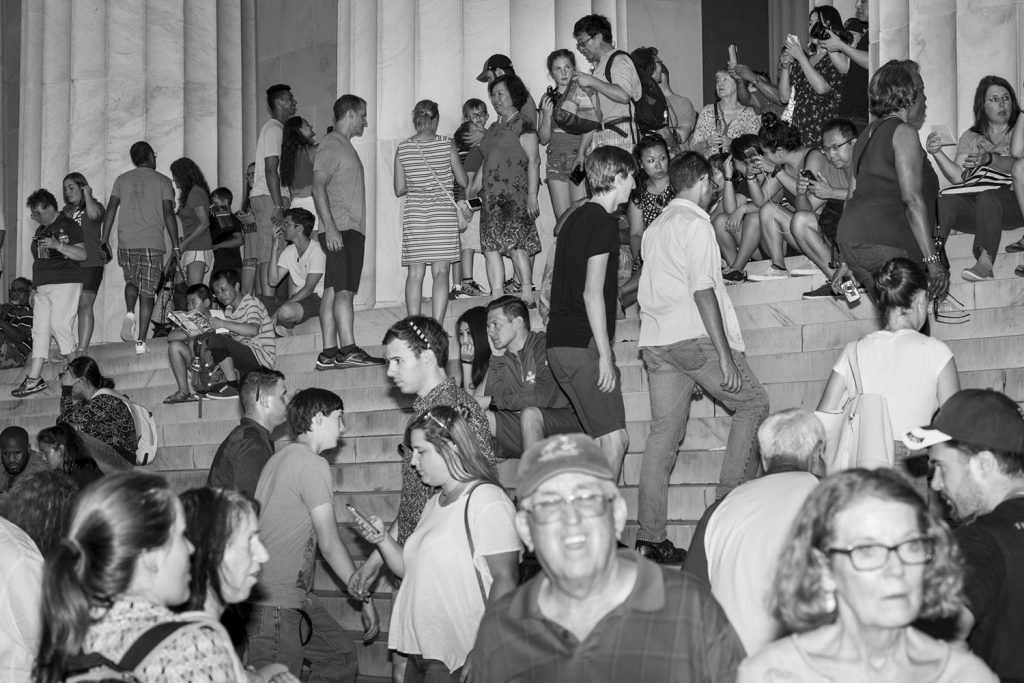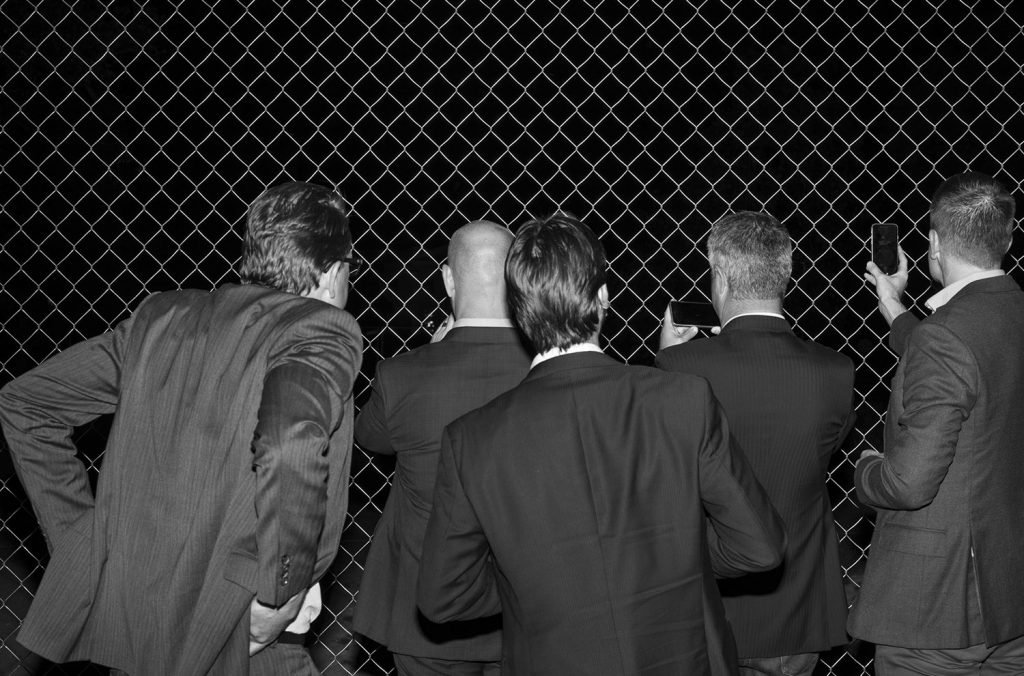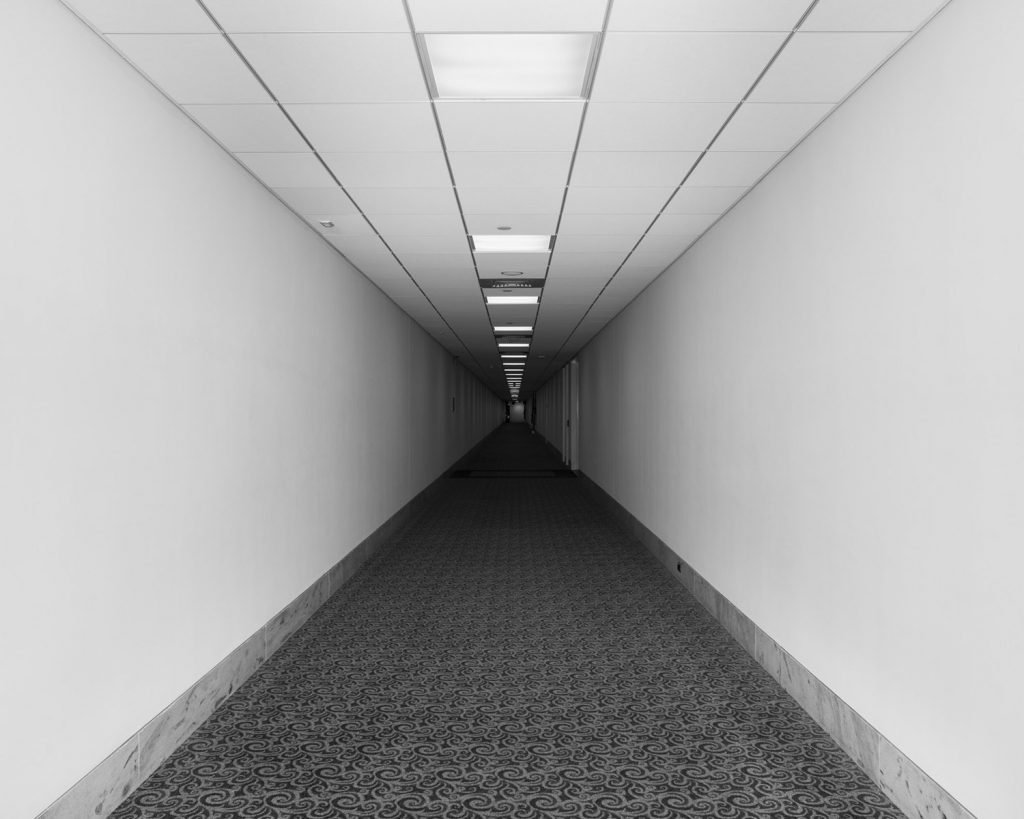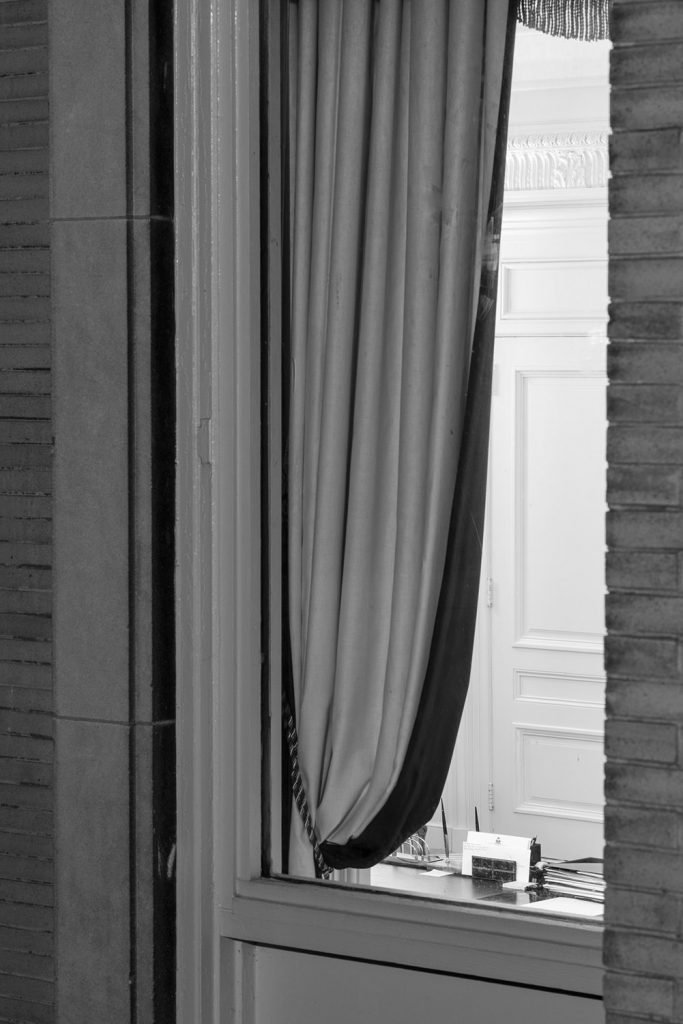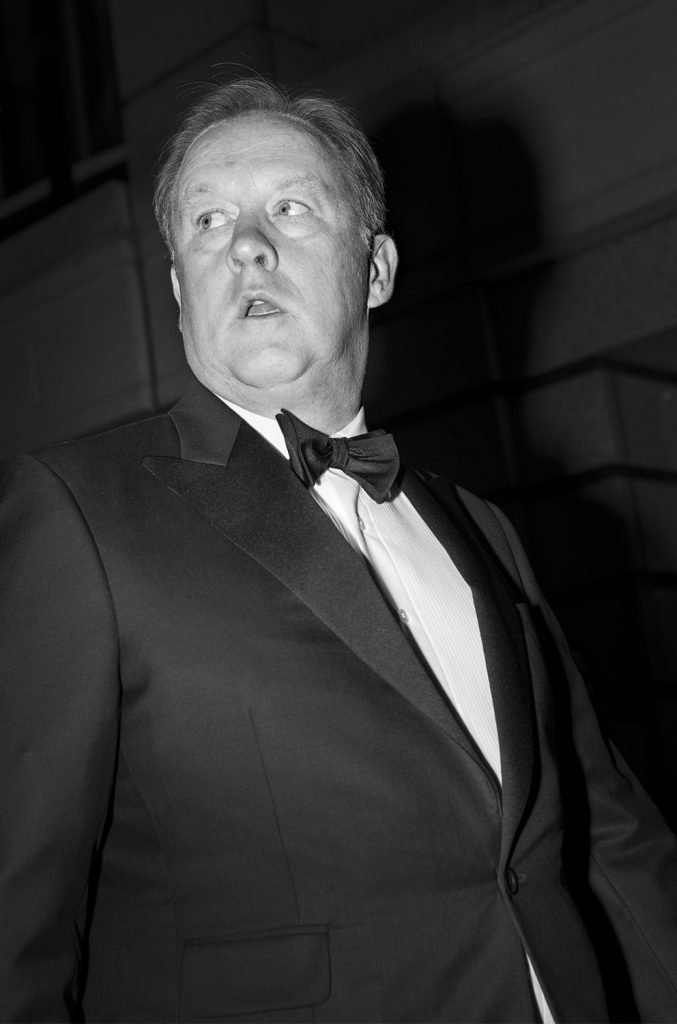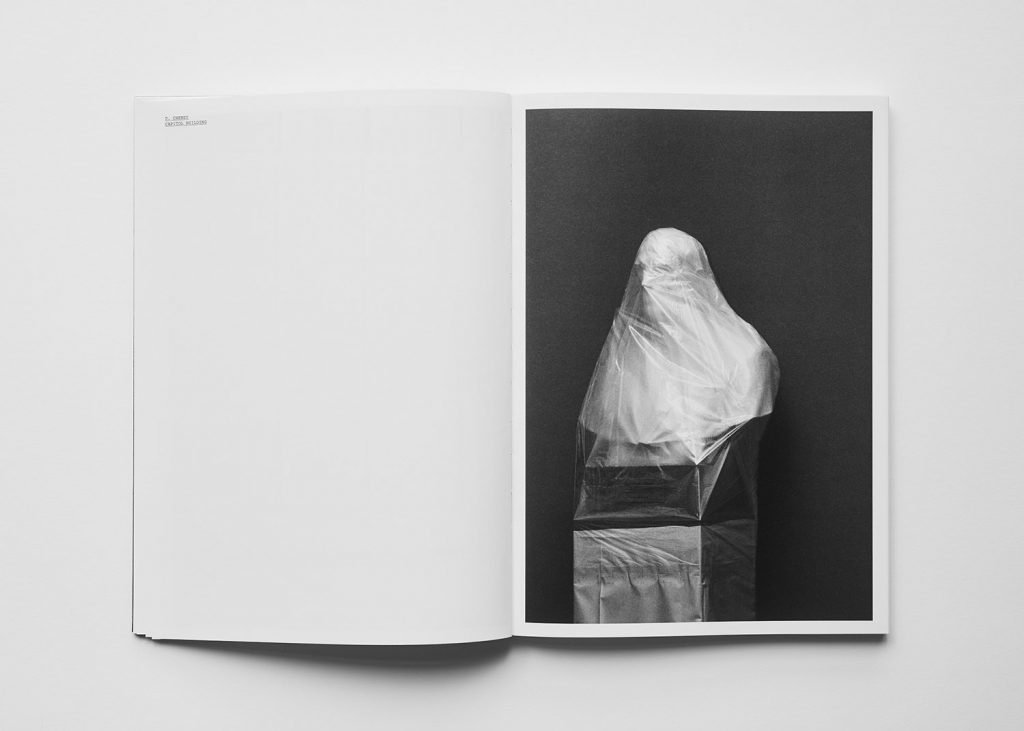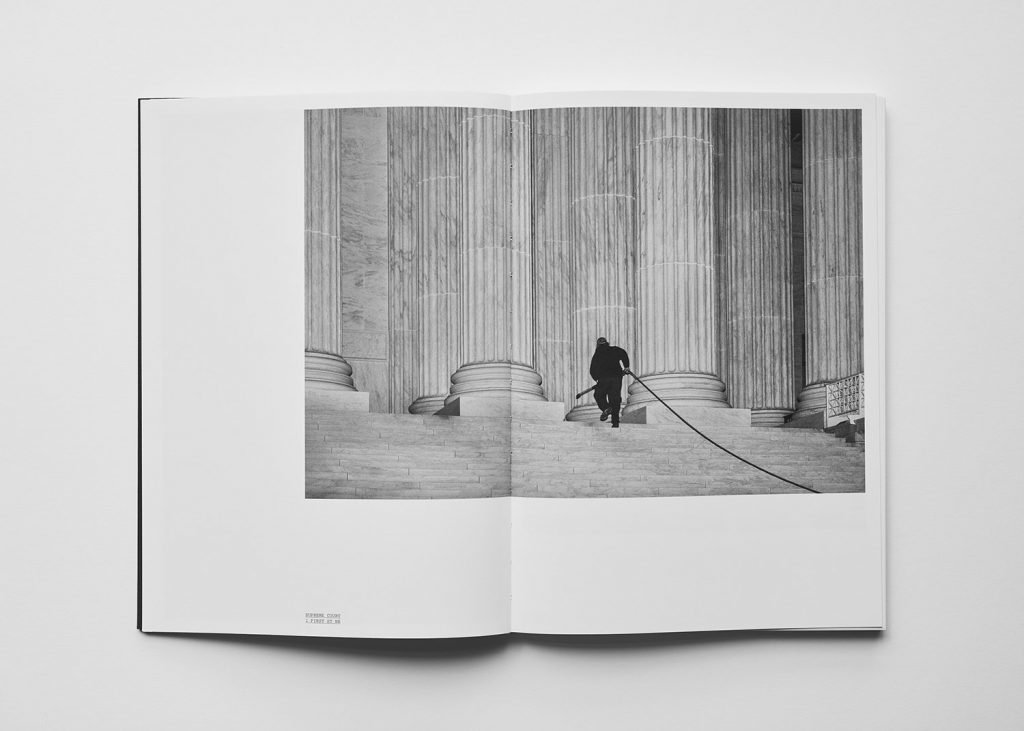It is maybe because this review pertains to photographs of the post-2016 Washington, D.C. scene that I feel comfortable leading off by shamelessly dropping an incredibly lofty claim that I do not intend to fully support: As unsetting as the implications are, Mike Osborne’s Federal Triangle might be as useful, revealing, and complexly poetic of a statement about the contemporary United States as The Americans was sixty years ago. This book wrenches the “photobook about America” genre in a new, valuable direction. Over the course of numerous trips, a press pass-assisted Osborne stalked the Beltway making pictures of everything from stark bureaucratic corridors to droves of anonymous tourists to Steve Bannon cheerfully answering his front door for some anonymous suit. The results, not journalistic but near journalism, are a perfectly hazy container for the paranoia and disaffection of a populace beleaguered by the flat institutional cruelty of a waning empire.
A lone figure casually dressed in dark clothes charges up marble steps and into an infinite sea of tremendous columns. He wields the long-nozzled gun of a pressure washer, hose trailing behind and out of frame like an astronaut’s oxygen tube. This looks to be a worker on his way to do some federal power spraying, and the bland ostentation of the stage proclaims his a futile and dumb labor. But like the numerous unmarked white vans scattered throughout the book, he is made suspicious by the texture of his landscape. The tension of his tether is immediately felt. Pressure Washer Man—he’s more likely hosing down a dusty James Madison plaque than he is storming his own little Bastille, but I love him either way—embodies the sharp and highly photographic uncertainty threaded throughout Federal Triangle.
Some pictures are given spy novel-worthy captions, like the dim image of a construction ladder ascending to a second story balcony revealed in text as “AMBASSADOR’S RESIDENCE.” Other pictures speak more definitively. One depicts a bust of Dick Cheney wrapped tightly in plastic, as if infected. Figures like Jeff Sessions, Nancy Pelosi, and Kamala Harris snow up like celebrity timestamps for the more inane-clandestine and atemporal political drama of the work. Direct and indirect, meaning and meaninglessness, are so seamlessly blended that one is liable to get lost in the mist, like a much more fun version of cable news without corporate sponsors.
In conversation, Osborne claims the book to be nearly nonpartisan. I buy it, to a point. I can imagine a QAnon guy “decoding” the sequence in 15,000 words on 4chan almost as easily as I can picture it stirring those on the left. But I am not certain it is entirely my own bias that makes me feel animosity toward the Consultant Types, their beefy cigars and decaying grimaces unkindly presented via flash-in-hotshoe street portraits. Nor do I rule out the role that sequencing plays in making me empathize with the barista vacuuming shards from a shattered Starbucks window as I also empathize with the anti-fascist protestors who smashed it. The “normal citizens” in Federal Triangle are workers and tourists and protestors. Many, like Pressure Washer Man and his occupational tether, seem to have been set on a course outside their control. The penultimate photograph, where dozens of tourists cluster outside the Lincoln Memorial, accounts for the largest collection of bodies in the book. We can easily locate ourselves within their omnidirectional mass.
“‘The Photographing of America’ is a large order—” wrote Robert Frank in his 1954 Guggenheim fellowship application, “read at all literally, the phrase would be an absurdity.” Certainly. Federal Triangle addresses this challenge in fresh ways. It is a cryptic, squirmy tour through the nation’s capital, well-served by Osborne’s use of digital black-and-white with lots of on-camera flash. From this position it provides necessary visuals for the hyperreal mess of affect that undergirds American politics and spills all over our Twitter timelines.
The final picture in the book, post-colophon, depicts a Hallmark-quality winter landscape outside a stately Virginia home. Not a footprint or tire track can be seen in the pristine snow that blankets the lawn. Read narratively, this picture feels at first like the quiet reprieve of a winter morning distanced from the grinding political machinery that preceded it. But its caption disfigures the peaceful scene into the coda of a horror film, vanquished hand bursting up from the grave in dark celebration of total unaccountability. I won’t spoil it here.
Mike Osborne is a photographer whose work touches on a range of themes including architecture, landscape, history, and technology, ultimately taking the form of books and exhibitions. His photographs are included in the collections of the Museum of Fine Arts Houston, the Dallas Museum of Art, the Contemporary Austin, and the University of Virginia. Federal Triangle, a project set in Washington, DC, will be published by Gnomic Book in 2019. His work has also appeared in publications such as the New Yorker, Time, the New York Times, and the New Republic. He lives in Austin, Texas.


